Get Rid of Flying Insects The Easy Way
Dealing with pesky flies can be a hassle, especially during the warmer months when they seem to multiply overnight. Finding the right solution to keep your home and outdoor space bug-free from these unwelcome visitors is important for your family's comfort and hygiene.
From traditional sticky traps to advanced pheromone lures, a variety of fly killers are available to suit different needs and preferences. Here are some of the top-rated options and best fly traps for effectively tackling your fly problem in 2024.
Top 7 Fly Killers
-
Best Residual Fly Killer: LambdaStar UltraCap 9.7
-
Best Fly Bait: Maxforce Granular Fly Bait
-
Best Fly Light: Flyweb Classic Fly Light Insect Trap
-
Best Indoor Fly Traps: Musca-Stik. Sticky Fly Trap
-
Best Outdoor Fly Traps: Catchmaster Disposable Fly Trap
-
Best Direct Spray For Flies: PT 565 Plus XLO Contact Insecticide
-
Best All-In-One Solution: Residential Fly Kit
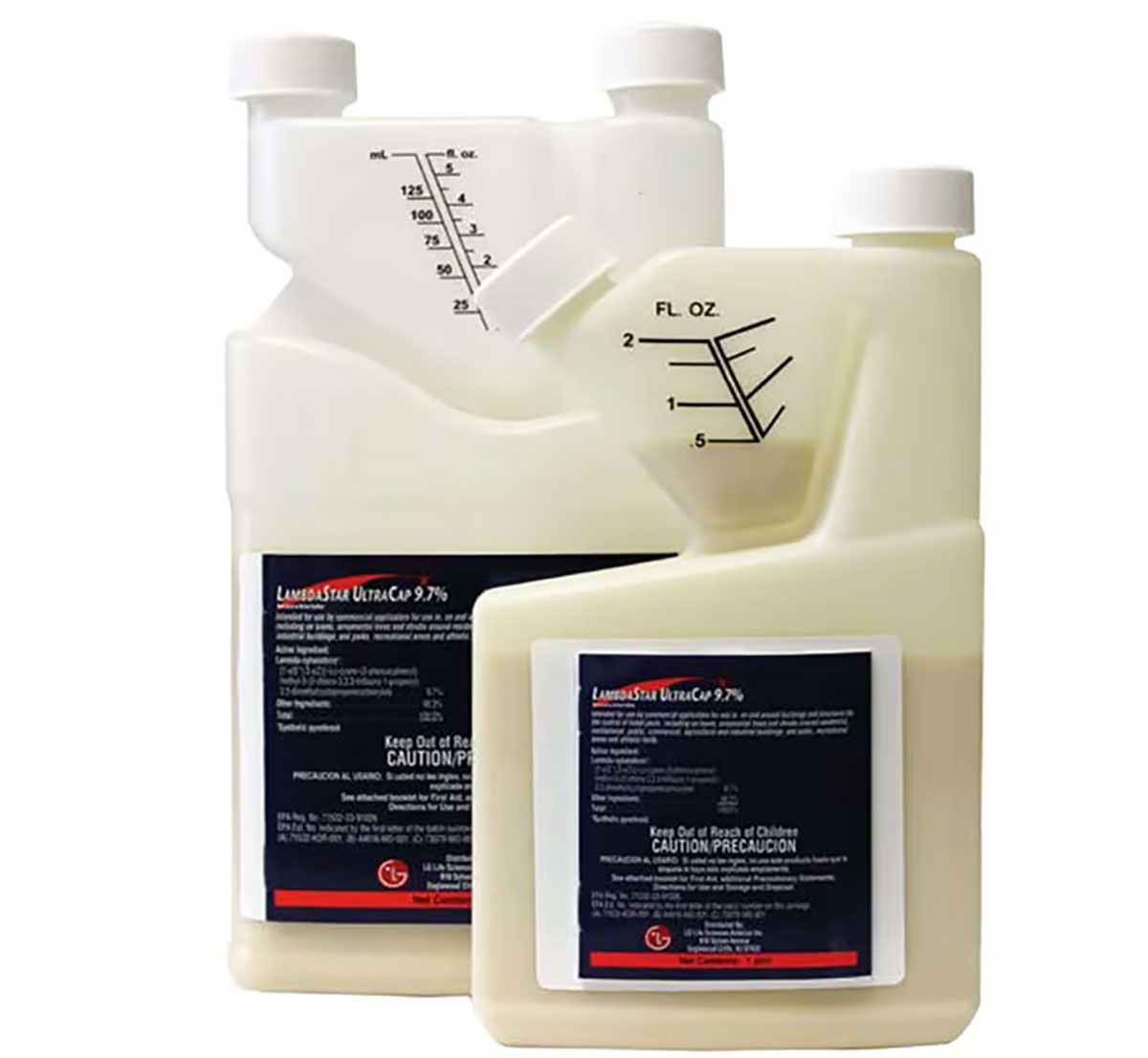
LambdaStar UltraCap 9.7
Best Residual Fly Killer: LambdaStar UltraCap 9.7
Benefits
-
Long-lasting, powerful residual effect with low risk of irritation
-
Can be used indoors and outdoors
-
Low odor
-
Easy mixing process
Drawbacks
-
Needs to be mixed beforehand
-
May not provide an instant knockdown and kill
-
Does not keep flies in place like a sticky trap
Quick Facts
Fly control in: Flies that come in direct contact die within minutes
Lasts up to: Up to 30 days
Active ingredient: Lambda-Cyhalothrin
LambdaStar UltraCap 9.7 at a Glance
LambdaStar UltraCap 9.7 is a lambda-cyhalothrin formulation enclosed in microcapsules, allowing for easy measurement and mixing. This encapsulated version enhances efficacy by sticking well to the applied surface.
Compared to Demand CS and Lambdastar 9.7 CS, both containing lambda-cyhalothrin at 9.7%, LambdaStar UltraCap demonstrates higher mortality rates in a 12-week trial and minimizes the risk of user irritation.
LambdaStar UltraCap 9.7 exhibits excellent adhesion to surfaces, making it suitable for perimeter treatments around buildings. Use it to spray along the house perimeter, windows, eaves, and door thresholds to combat various household pests like flies, large roaches, spiders, scorpions, and more (refer to the product label for details).
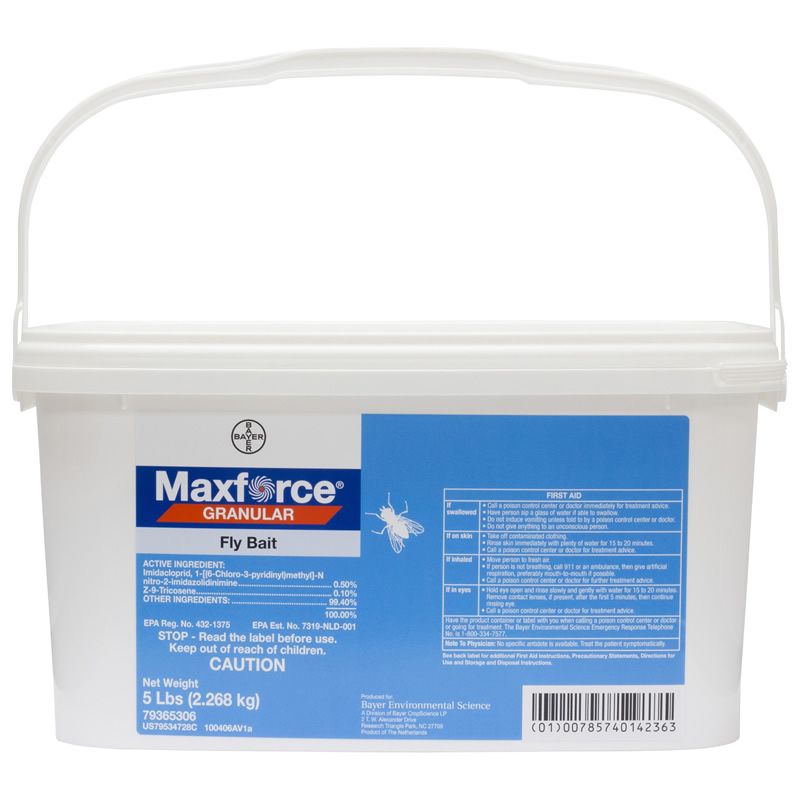
Maxforce Granular Fly Bait
Best Fly Bait: Maxforce Granular Fly Bait
Benefits
-
Fast-acting and consistent fly control
-
Excellent for outdoor and outside structure use
-
Designed specifically to target house flies
-
Works on flies that are resistant to organophosphate and carbamate insecticides
-
Can be used in an outdoor fly trap bait station or with a broadcast spreader
Drawbacks
-
Does not work on a wide variety of other insects, as some fly insecticides do
-
No long-lasting residual effect
-
Not for indoor use
Quick Facts
Fly control in: 60 seconds or less
Lasts up to: 30 Days
Active ingredient: Imidacloprid, Z-9 Tricosene (Muscalure pheromone)
Maxforce Granular Fly Bait at a Glance
Maxforce Granular Fly Bait attracts flies, swiftly eliminating them when they consume it. Typically, it will kill them within a minute, significantly reducing the fly population. It is specifically used to manage House Flies in various settings like Livestock Facilities, stables, warehouses, dumpsters, recycling areas, and exterior non-food contact zones of establishments such as restaurants, bakeries, supermarkets, grease pits, or loading docks.
This granular bait is for house fly control and is applied as a broadcast treatment or in fly bait stations. Imidacloprid, one of the primary active ingredients in Maxforce granular fly baits, acts fast. It's effective even against flies resistant to other insecticides. Offering lasting control, it combats flies for up to 30 days and is suitable for use around structures and commercial and agricultural sites.
Maxforce granular fly bait is easy to apply and available in various container sizes (5 lbs. and 40 lbs.) for convenience. It has minimal impact on non-target animals, making it a practical choice for fly control needs.
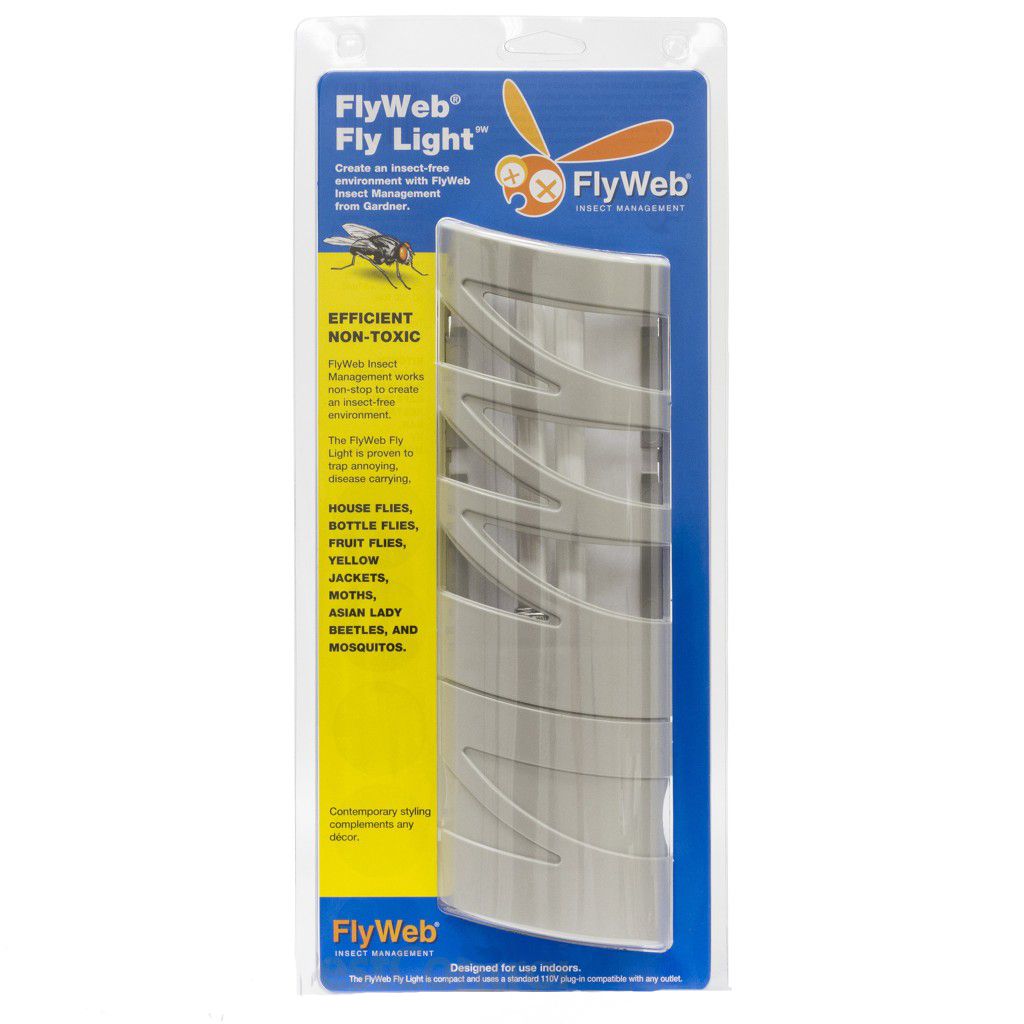
Flyweb Classic Fly Light Insect Trap
Best Fly Light: Flyweb Classic Fly Light Insect Trap
Benefits
-
Affordable
-
Effective
-
24-hour trapping
-
Silent and non-toxic
-
Safe around children, pets, and food prep areas
Drawbacks
-
Larger size than other plug-in fly traps
-
Less effective during the day because its light competes with natural sunlight in the room.
-
No off-switch on the device
Quick Facts
Fly control in: begins working immediately
Lasts up to: 1 year
Active ingredient: N/A
Flyweb Classic Fly Light Insect Trap at a Glance
The Flyweb Fly Light is designed to be small and have direct plug-in functionality, making it suitable for placement in any outlet. This insect light uses a lamp that attracts insects to the adhesive trapping board. The 9-watt UV light draws flying insects within a range of 600 sq ft. When the glue board becomes full, it can be easily replaced with a new one.
Operating around the clock, the FlyWeb light trap efficiently uses a 9-watt UV light to attract flying insects and trap flies. The trapped insects are attracted to the UV light and captured on the adhesive glue card. The FlyWeb light trap is UL-listed and has compact dimensions (3.5" wide x 11" high) and a standard 110V plug compatible with various outlets. The glue board size is 3" x 5".
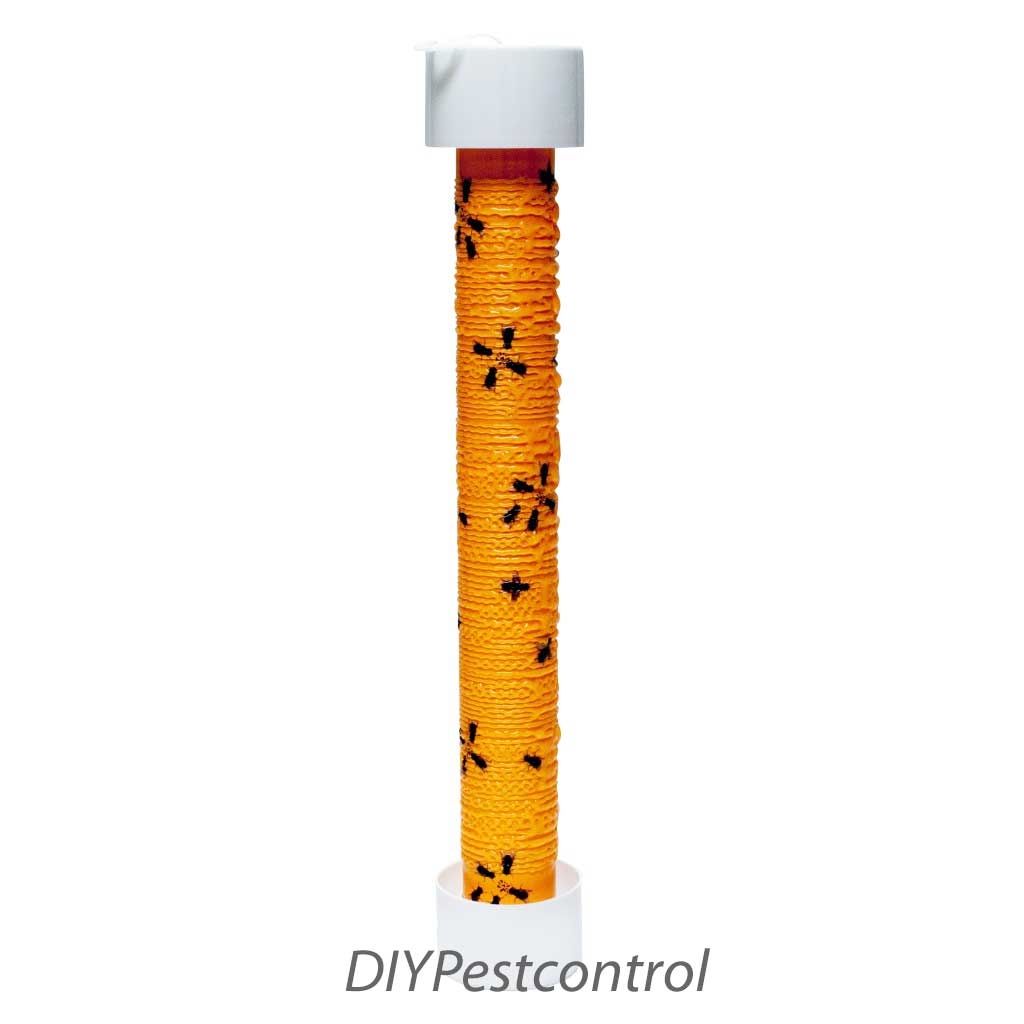
Musca-Stik. Sticky Fly Trap
Best Indoor Fly Trap: Musca-Stik. Sticky Fly Trap
Benefits
-
Non-toxic
-
Contains a fly pheromone called Muscalure that draws in many flies
-
Musca-Glo orange color helps to attract even more flies
-
Odor-free
-
Disposable
-
Extremely easy to set up and use
Drawbacks
-
Must be replaced when full to remain effective
-
Sticky surface that may be difficult to handle when setting up
-
Cannot be used outdoors
Quick Facts
Fly control in: begins working immediately
Lasts up to: Several weeks or until full of flies
Active ingredient: Muscalure pheromone
Musca-Stik. Sticky Fly Trap at a Glance
The Musca-Stik Sticky Fly Trap comes in sizes of 12" and 24". This indoor fly trap offers a safe way to catch flies without insecticides. It lures flies using an orange color and a sex pheromone called Muscalure.
The trap is discreet, odor-free, and suitable for use around the house or in areas where food is handled. It can be hung out of the reach of children and pets. These fly traps (indoor) are effective against flies and other flying insects, can be used indoors, and are completely free of insecticides. They can be used outdoors in limited situations, such as under a porch roof.
The orange color of the Musca-Stik attracts flies visually, while the addition of Muscalure enhances its appeal. Size options available include the 12" long Musca-Stik Jr. Sticky Indoor Fly Trap (available as singles or cases) and the 24" long Musca-Stik Sticky Fly Trap (also available as singles or cases).
We highly recommend these indoor fly traps, which are much better than Catchmaster Gold Stick fly traps in our experience.
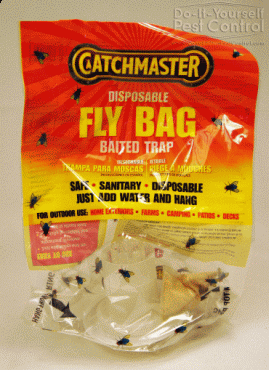
Catchmaster Disposable Fly Trap
Best Outdoor Fly Trap: Catchmaster Disposable Fly Trap
Benefits
-
Non-toxic, safe around humans and animals
-
High capacity
-
Disposable when full
-
Easy to set up and use
-
Includes attractant for a broad range of flies
Drawbacks
-
Once full, it will need to be replaced with a new bag
-
For outdoor use only
-
Dead flies may begin to smell after two to three weeks
Quick Facts
Fly control in: 2-3 days
Lasts up to: Several weeks or until full of flies
Active ingredient: N/A
Catchmaster Disposable Fly Trap at a Glance
The Catchmaster Disposable Fly Trap (#975-8) is ideal for trapping outdoor flies without the use of pesticides. It features a lure that effectively attracts common fly species and can be placed outside on various surfaces. Once filled, it can be sealed and discarded cleanly. The secure locking cap prevents spills and odors. Each trap includes a convenient pop-cap and twist tie for hanging.
Simple to use, the attractant dissolves when water is added. The lure is specifically crafted to entice a wide range of fly species.
The fly trap is safe as its ingredients are non-toxic, making it suitable for use around humans and animals. It attracts flies like houseflies and blowflies by creating an irresistible solution when mixed with water. Flies become trapped and drown in the mixture. The attractant remains effective over time without losing its potency.
For effective trapping, place multiple traps 10-30 feet away from homes to reduce indoor fly issues. In enclosed spaces like barns, hang traps near electric lights. Optimal placement is in sunny areas shielded from strong winds. The trap can attract flies from 30-40 feet away, depending on wind conditions. Regularly check the water level and add more if it falls below the line. The bait will continue to attract various species and remain potent.
For best results, hang the Catchmaster Disposable Fly Traps downwind to prevent odors as they fill up. It may take a few days to start catching flies, but the traps are safe for use around barns and outdoor areas.
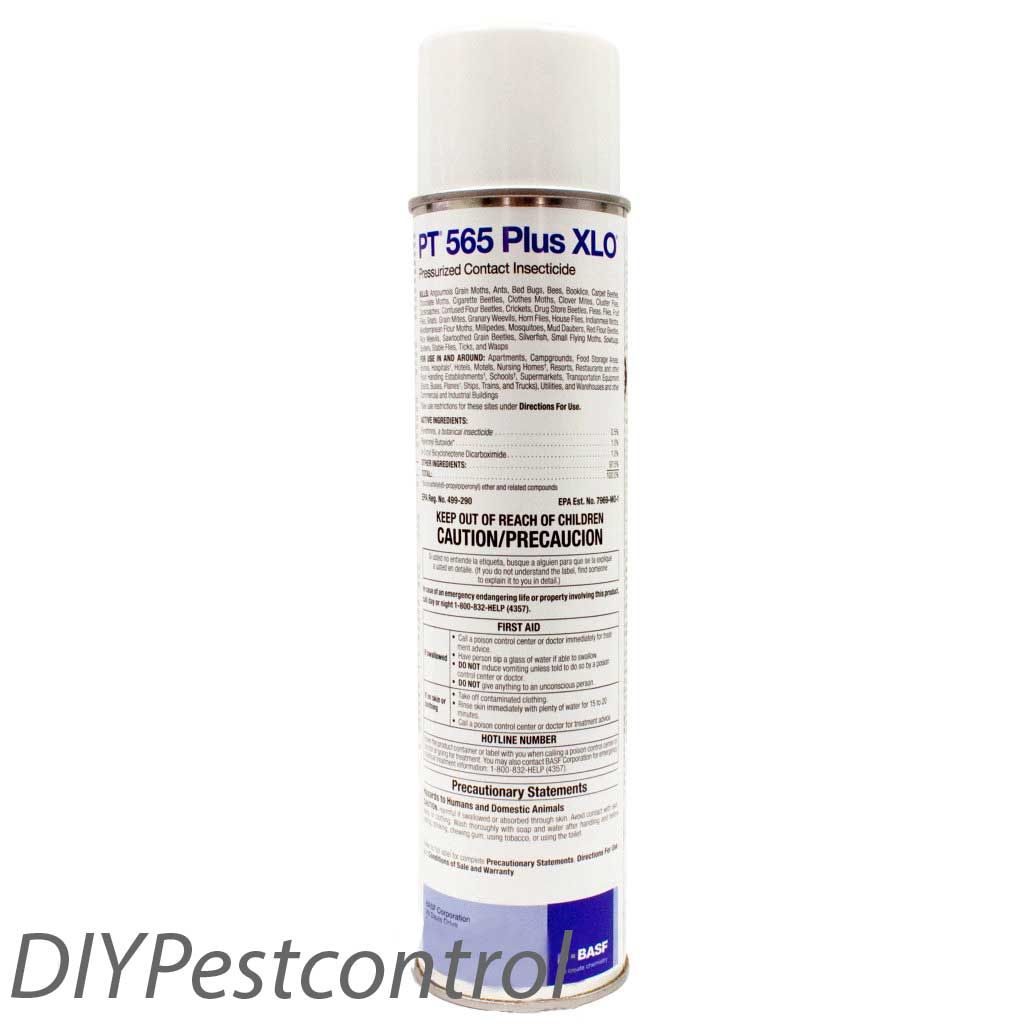
PT 565 Plus XLO Contact Insecticide
Best Direct Spray For Flies: PT 565 Plus XLO Contact Insecticide
Benefits
-
Features a strong knockdown and kill effect
-
Low odor formula is perfect for inspections
-
Kills a wide range of other flying and crawling pests
-
Can be used in food handling
-
Excellent for direct contact and space treatment applications
Drawbacks
-
Can be sensitive to cold environments and needs to be warmed to room temperature before application
-
Does not feature a residual effect as long as some other fly killers
Quick Facts
Fly control in: Immediate contact kill effect
Lasts up to: Up to 1 week
Active ingredient: Pyrethrin, Piperonyl Butoxide Technical
PT 565 Plus XLO Contact Insecticide at a Glance
PT 565 Plus XLO Contact Insecticide contains Pyrethrin at a concentration of 0.50%. This insecticide offers quick knockdown and flushing capabilities. It can serve as a space spray or a targeted contact spray using its crack and crevice tip. Being a low-odor solution, it is excellent for detecting insects by flushing them out from their hiding spots. It effectively eliminates a wide variety of flying and crawling insects.
Key features of PT 565 include its suitability for targeted contact and space treatment and its minimal odor, making it ideal for inspections. It provides comprehensive insect-killing power to combat various flying and crawling insects. The product shows some sensitivity to cold and should be brought to room temperature before application. Additionally, PT 565 is compatible with System III, a professional application tool, and can be used in food handling areas.
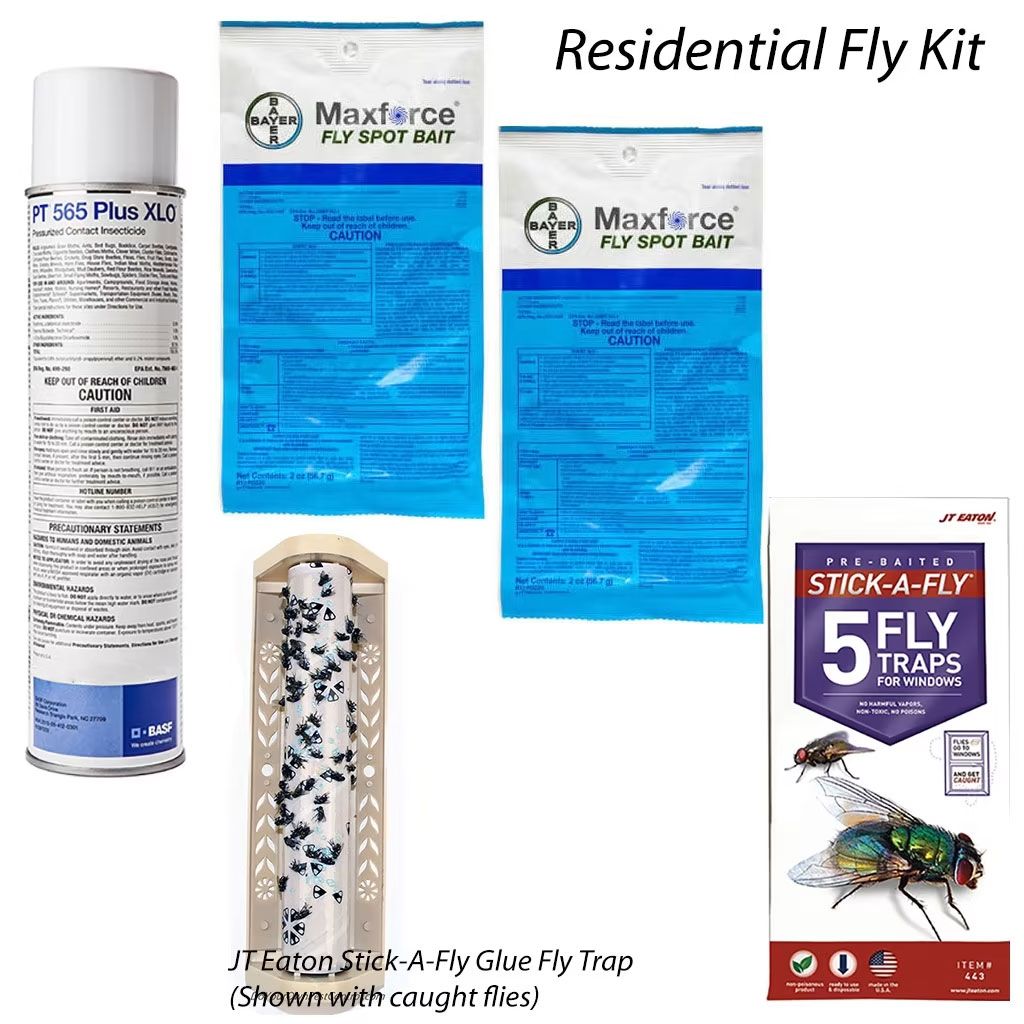
Residential Fly Kit
Best All-In-One Solution: Residential Fly Kit
Benefits
-
A diverse collection of different approaches to fly control
-
Fly bait
-
Fly traps
-
Contact spray
-
Window sticky traps
Drawbacks
-
Indoor-focused kit - less effective for serious fly problems outdoors
-
May not be necessary for minor fly issues
Quick Facts
Fly control in: Varies per product in the kit
Lasts up to: Several weeks for fly traps and bait, likely several years for spray
Active ingredient: Pyrethrin, Piperonyl Butoxide Technical, Imidacloprid
Residential Fly Kit at a Glance
The Residential Fly Kit Includes:
-
PT 565 Plus XLO Contact Insecticide (1) 14 oz can containing Pyrethrin for a rapid knockdown.
-
Maxforce Fly Spot Bait (2) Packets-2 oz each (makes two pints of solution)-mix with water and apply on a vertical surface. This bait attracts flies, leading to quick mortality.
-
JT Eaton Stick-A-Fly Glue Trap (1) -Utilizes a pheromone lure to entice house flies onto the glue surface.
-
Stick A Fly For Windows (1) Pack of Five Pre-Baited Traps-Place these non-toxic traps on windows to capture flies. Made in the USA, simply fold and position in the upper right window corner.
Instructions for Fly Control Kit
-
Begin by spraying rooms with PT 565 Plus XLO where flies are problematic. Spray into the air with a sweeping motion for 1 to 3 seconds per 1000 cubic feet.
-
Position Stick-A-Fly traps in fly-infested areas. Window traps capitalize on flies' attraction to light.
-
Address outdoor fly issues by using Maxforce Fly Spot Bait. Dilute the 2 oz packet in 16 ounces of water to cover up to 125 sq feet. Apply small spots approximately one square foot each. Reapplication may be necessary after seven days.
The PT 565 is long-lasting as only minimal amounts are required. Apply it upon sighting a fly for immediate effect. For window traps, place them at the window's bottom to catch flies moving down. Consider utilizing a hanging fly trap outdoors to enhance control.
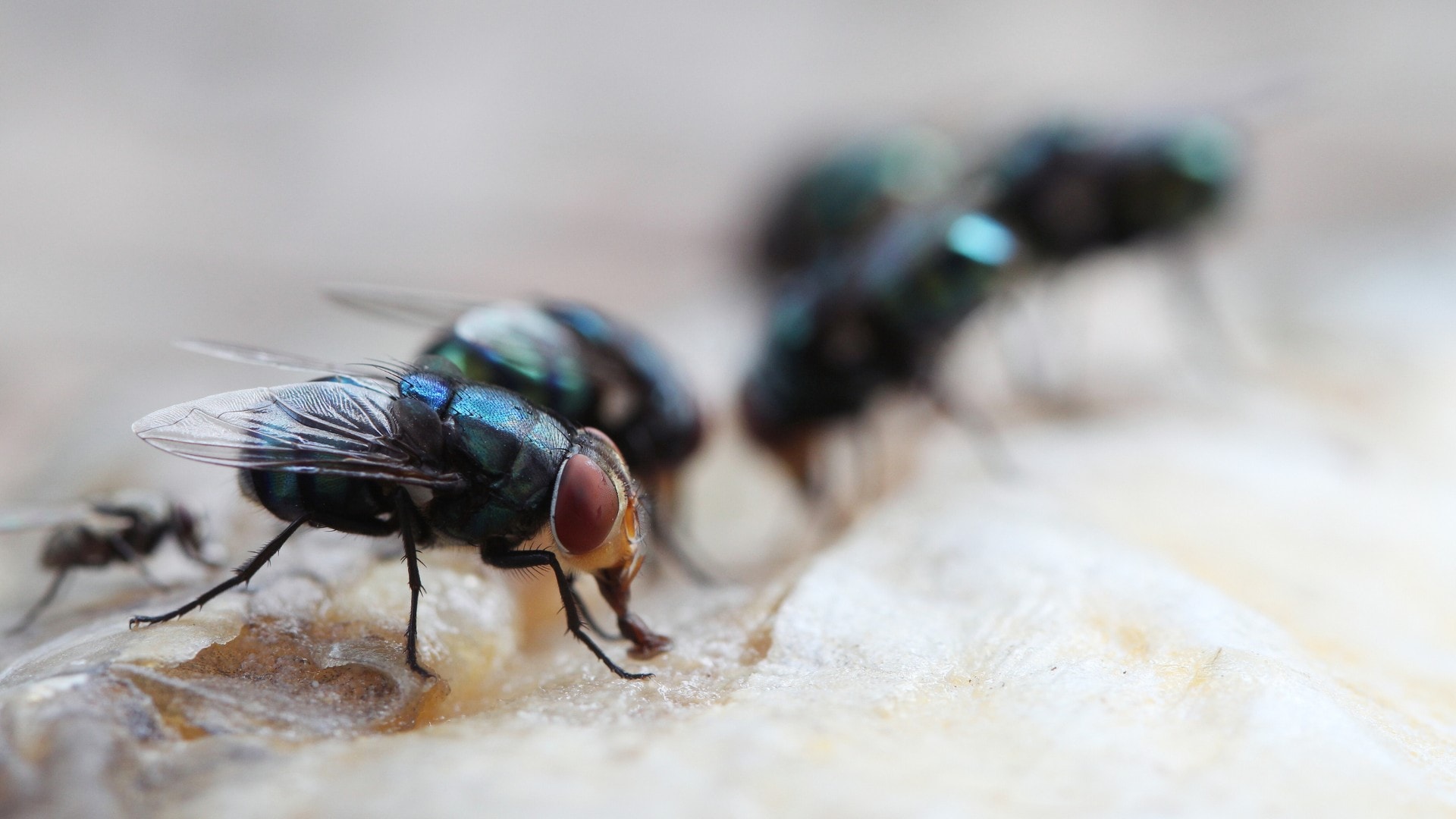
Flies feasting on trash
Signs Of A Fly Infestation To Look For
Common indicators of a fly infestation include the presence of adult flies, particularly in large numbers. These insects are often spotted around food sources, trash bins, and other areas where organic material can accumulate.
Additionally, tiny dark clusters of fly spots, which are essentially fly excrement, can be visible on walls, light fittings, and surfaces where flies frequently rest. Another telltale sign is the finding of larvae, also known as maggots, which thrive in decomposing matter and can be found in drains, garbage, or other moist areas conducive to their development.
Noticing an increase in fly activity, especially in areas close to food storage or preparation, is a strong indication that there is a breeding site nearby that may need immediate attention. Effective control methods should be implemented promptly to avoid the rapid multiplication of flies, ensuring a hygienic and fly-free environment.
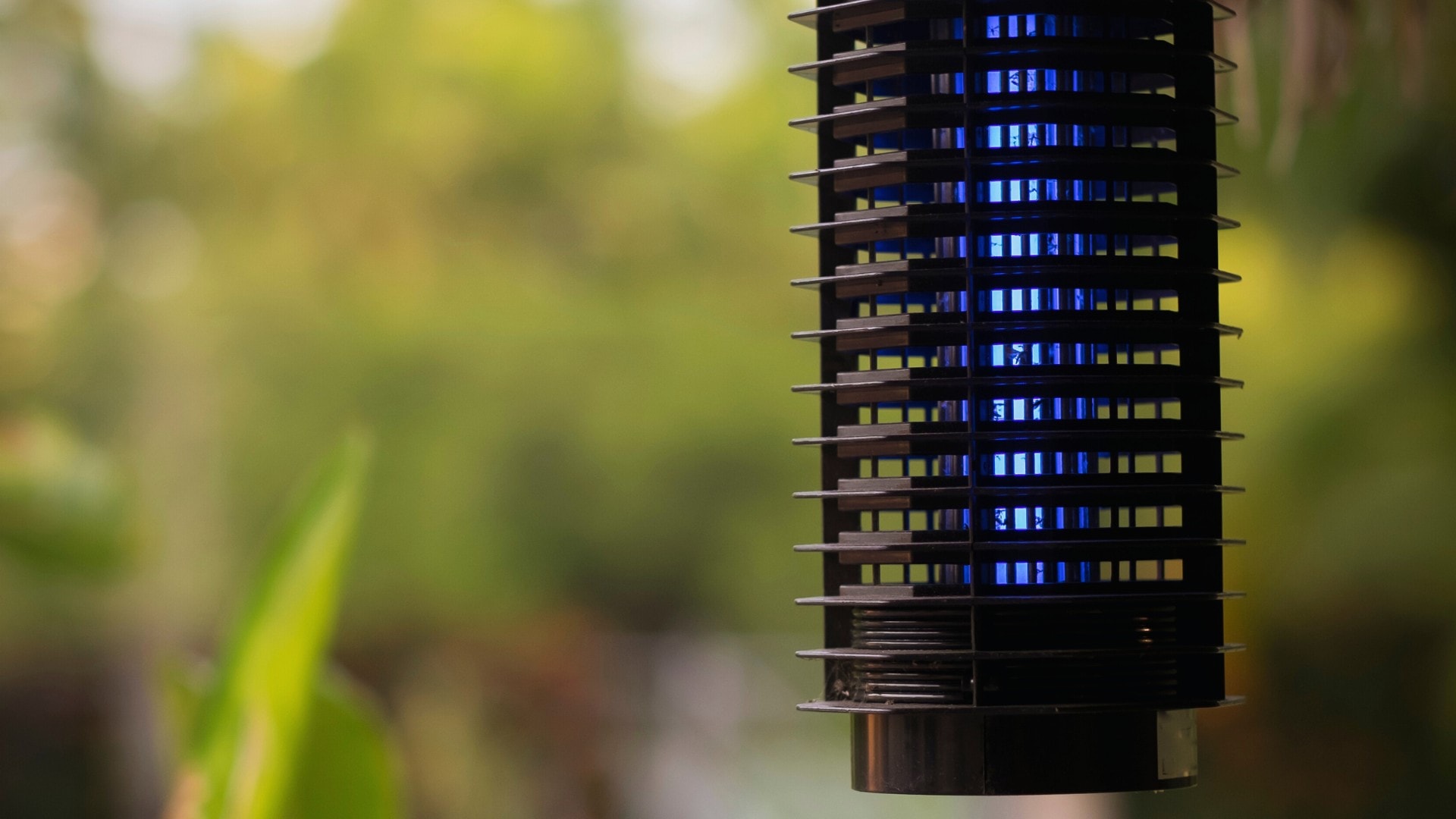
An electric fly killer, also known as a fly zapper.
Types of Fly Killers
Electric Fly Killers:
-
Description: Electric fly killers, also known as bug zappers, use ultraviolet light to attract flies and other flying insects. Once the insects come into contact with the electrically charged grid, they are instantly killed.
-
Advantages: They are effective for continuous control, especially in indoor environments such as kitchens and food preparation areas. They are low maintenance and often come with a collection tray for easy disposal of dead insects.
-
Disadvantages: The zapping sound can be disturbing, and the sight of dead insects can be unpleasant. They also use electricity continuously, which may result in higher energy costs.
Fly Traps:
-
Description: Fly traps come in various forms, including sticky traps, baited traps, and funnel traps. Sticky traps use adhesive to capture flies upon contact, while baited traps lure flies with attractants. Funnel traps use a conical entrance that flies can enter but cannot exit.
-
Advantages: Fly traps are chemical-free and safe for indoor use. They are particularly useful in reducing fly populations over time.
-
Disadvantages: Traps need to be regularly emptied or replaced, and their effectiveness can diminish as they fill up.
Insecticide Sprays:
-
Description: Insecticide sprays can be either residual or non-residual. Residual sprays are applied to surfaces and continue to kill flies upon contact for days or weeks. Non-residual sprays provide a quick knockdown but do not have lasting effects.
-
Advantages: Sprays offer immediate results and can target specific areas where flies congregate. They are versatile for both indoor and outdoor applications.
-
Disadvantages: Some sprays may emit strong odors and require precautionary measures to avoid inhalation or contact with food. Overuse can lead to resistance in fly populations.
Fly Baits:
-
Description: Fly baits use food-based attractants mixed with insecticides to lure and kill flies. They can be placed in bait stations or applied as granules or liquids to surfaces.
-
Advantages: Fly baits are highly effective for reducing large fly populations quickly. They are suitable for both indoor and outdoor use.
-
Disadvantages: The placement of bait must be strategic to avoid non-target animals accessing it. They may need regular reapplication, particularly in outdoor conditions.
Natural and Homemade Remedies:
-
Description: Natural remedies include the use of essential oils like eucalyptus, lavender, and peppermint, which repel flies. Homemade traps often use ingredients like apple cider vinegar, sugar, and dish soap to attract and drown flies.
-
Advantages: These methods are eco-friendly and safe around children and pets. They are also cost-effective and easy to implement with household items.
-
Disadvantages: Natural and homemade remedies may not be as effective for severe infestations and may require frequent replacement or reapplication.
By understanding the different types of fly killers available, homeowners and business owners can choose the most suitable method for their particular situation. Effective fly control often involves combining these strategies to achieve the best results.
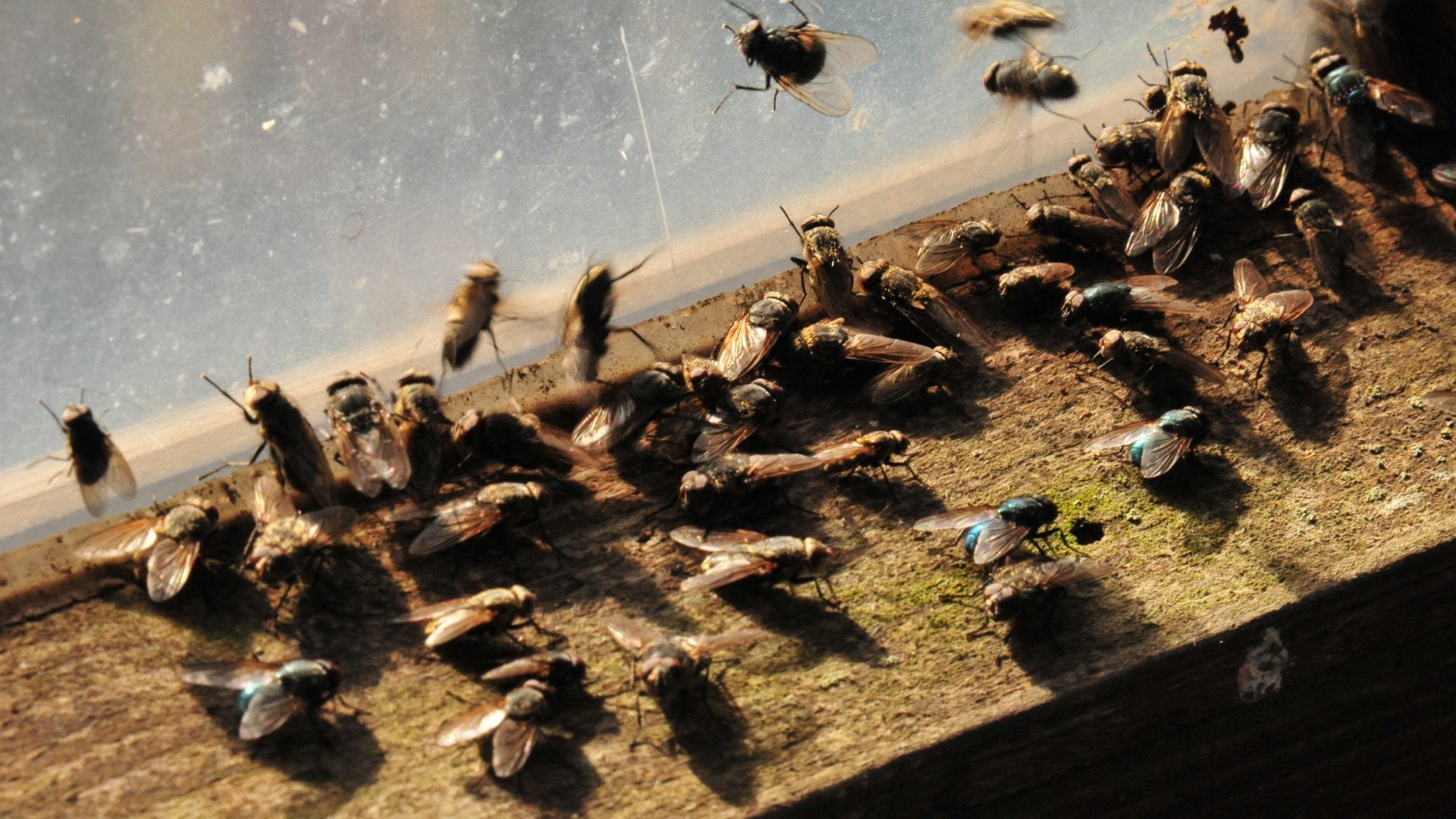
The location of the fly activity will affect which fly control method you use.
Choosing a Fly Killer: Top Points to Think About
A Buyer's Guide to Fly Control
When selecting a fly killer, it's crucial to consider several factors to ensure you achieve the most effective and efficient fly control solution for your needs.
-
Location of Fly Activity:
-
Indoor vs. Outdoor: Determine where the fly problem is most prevalent. Electric fly killers might be more suitable for indoor areas like kitchens, while fly baits and hanging traps can be more effective in outdoor settings.
-
Type of Flies:
-
Different fly species may respond better to certain methods. For example, house flies might be effectively controlled with sticky traps, while fruit flies may require baited traps or natural remedies.
-
Safety Concerns:
-
If you have pets or small children, consider using non-toxic or natural remedies. Electric fly killers and sticky traps can also be safe options, but ensure they are placed out of reach.
-
Maintenance Requirements:
-
Evaluate the time and effort needed for maintenance. Fly traps that need regular emptying may require more maintenance compared to fly insecticide sprays that offer residual effects.
-
Costs:
-
Consider both initial costs and ongoing expenses. While some solutions may be more affordable upfront, they might incur higher costs over time due to the need for replacements or refills.
-
Environmental Impact:
-
Opt for eco-friendly solutions when possible. For minor infestations, natural remedies like a homemade fruit fly trap are often the best choices for those looking to minimize environmental impact.
By carefully considering these points, you can select a fly killer that not only effectively addresses your fly problem but also aligns with your preferences and circumstances. Effective fly control often necessitates a multi-faceted approach, combining different methods to keep flies at bay and ensure a healthy, pest-free environment.
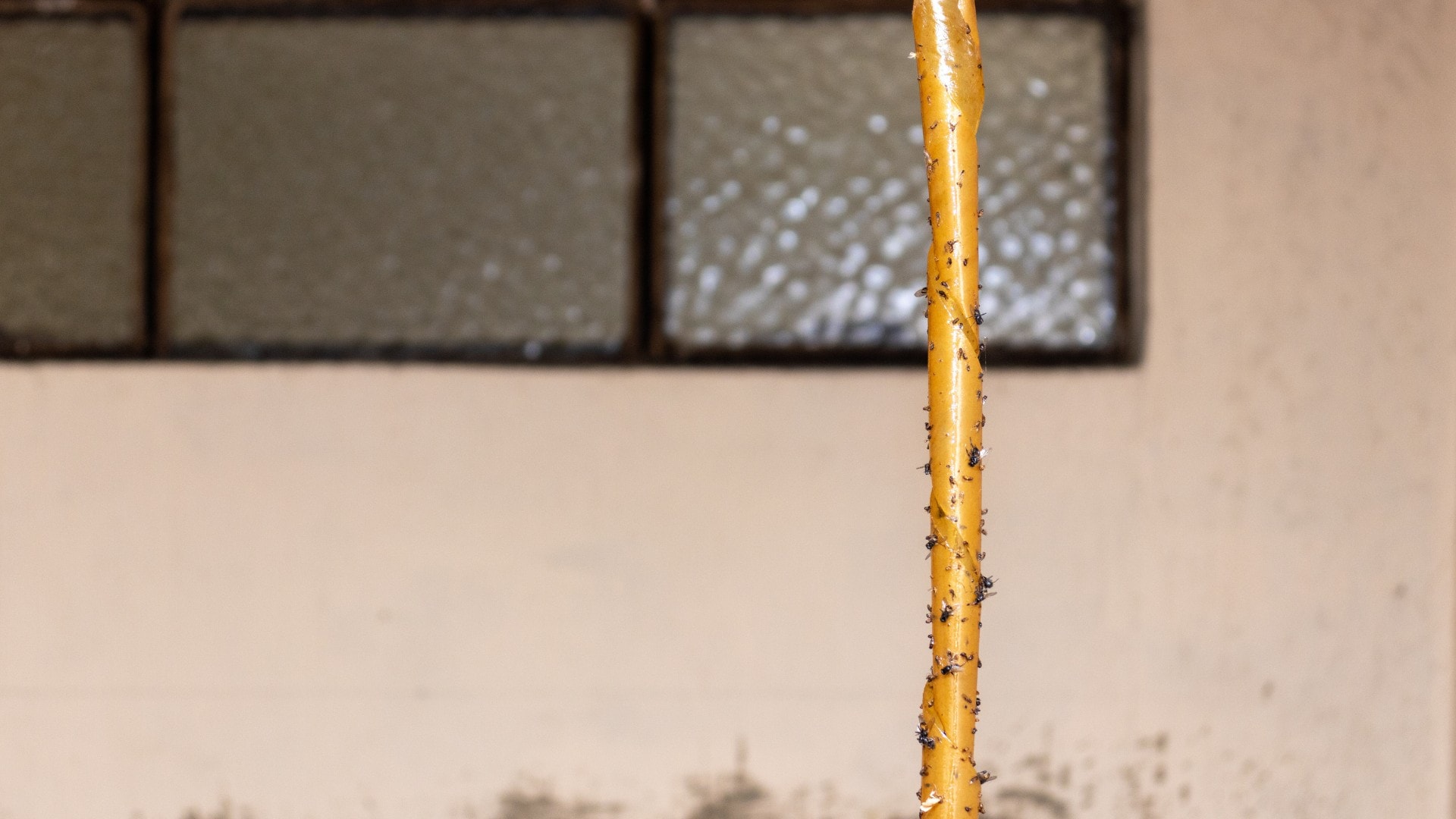
Some fly traps may contain the fly pheromone known as Muscalure or Z-9 Tricosene.
Active Ingredients In Common Fly Insecticides
Chemical Components and How They Work
Understanding the active ingredients in common fly insecticides can help you make an informed decision about what product to use. These chemicals are specially designed to target and eliminate flies either through contact or ingestion.
Active Ingredients in Common Fly Insecticides
Pyrethrins - Pyrethrins are natural insecticides derived from chrysanthemum flowers. They act quickly to paralyze and kill flies by interfering with their nervous system. Pyrethrins are commonly used in both residual and non-residual sprays.
Imidacloprid -Imidacloprid is a neonicotinoid insecticide that interferes with the nervous system of flies upon ingestion. It is frequently used in fly baits and is valued for its high effectiveness in reducing fly populations. Imidacloprid is particularly potent against house flies.
Lambda-Cyhalothrin - Lambda-Cyhalothrin is another pyrethroid insecticide designed for both contact and residual activity. It is favored for its potency and ability to provide extended protection against flies. Lambda-Cyhalothrin is often found in sprays and surface treatments.
Z-9 Tricosene - Z-9-Tricosene, also called Muscalure, is an insect pheromone present in dipteran flies like the common housefly. This pheromone is released by females to attract males for mating purposes.
Piperonyl Butoxide Technical - Piperonyl Butoxide Technical (PBO) acts as a pesticide synergist. On its own, it doesn't have pesticidal effects, but when combined with insecticides like Pyrethrin, pyrethroid, and carbamate, it significantly boosts their effectiveness.
Understanding these active ingredients and their mechanisms of action can help you choose the most appropriate fly insecticide for your situation, ensuring effective and targeted fly control.
Safety Tips for Using Fly Insecticides
-
Read Labels Carefully: Always follow the instructions on the insecticide label for proper application and safety measures.
-
Use Protective Gear: Wear gloves, masks, and protective clothing when applying chemical insecticides to minimize exposure.
-
Ventilation: Ensure adequate ventilation when using sprays and aerosols indoors to avoid inhalation of fumes.
-
Food Safety: Keep insecticides away from food preparation areas, utensils, and surfaces to prevent contamination.
-
Storage: Store insecticides in a safe, dry place out of reach of children and pets.
-
Dispose of Properly: Follow local regulations for the disposal of insecticides and their containers to reduce environmental impact.
By adhering to these safety tips, you can effectively manage fly problems while ensuring the safety of your household and the environment.
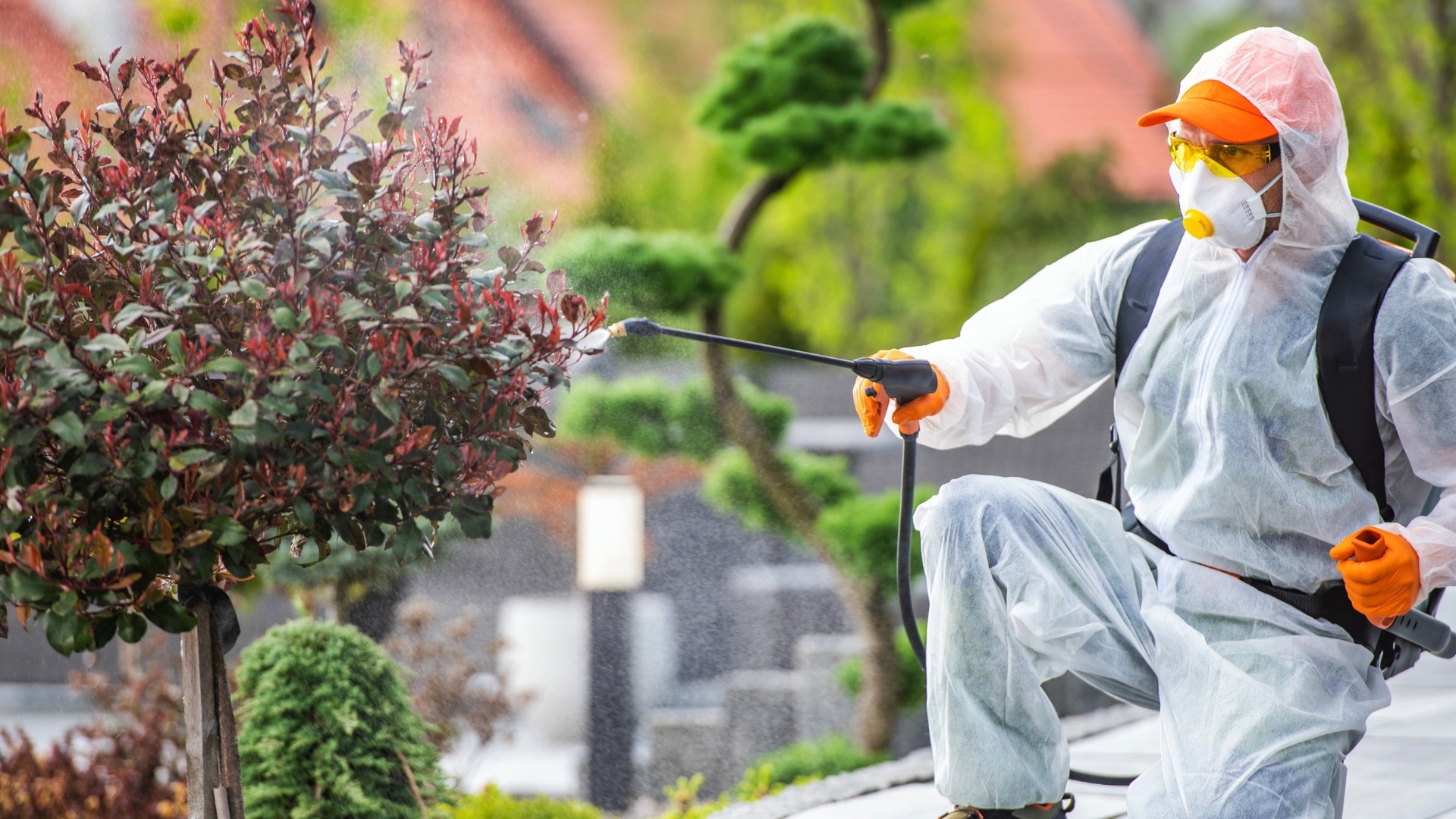
DIY or a professional technician? Which should you choose?
DIY Fly Killers vs. Pest Control Services
When it comes to addressing fly infestations, both DIY fly killers and professional pest control services have their own sets of advantages and drawbacks. Understanding these can help you make an informed decision on which approach to take based on your specific needs and circumstances.
DIY Fly Killers
Pros:
-
Cost-Effective: DIY methods typically involve lower upfront costs than hiring professionals. Homemade remedies and store-bought products like fly traps, baits, and sprays are generally affordable options.
-
Accessibility: DIY fly killers are widely available and can be purchased easily from local stores or online. This convenience allows for quick action when flies become a problem.
-
Control Over Chemicals: By choosing DIY solutions, you have the flexibility to use natural or eco-friendly ingredients, reducing exposure to harsh chemicals.
Cons:
-
Time-Consuming: Setting up and maintaining DIY fly killers often requires a significant amount of effort and time, particularly for severe infestations.
-
Limited Expertise: Without professional knowledge, DIY solutions may not be as effective in fully eradicating flies or preventing future infestations.
-
Inconsistent Results: The success of DIY methods can vary, and it might be necessary to try multiple products or approaches to achieve satisfactory results.
Pest Control Services
Pros:
-
Expertise and Experience: Professional pest control technicians have the training and expertise to effectively identify, treat, and prevent fly infestations. They are knowledgeable about the latest and most effective treatment methods.
-
Time-Saving: Hiring a pest control service saves you time and hassle. Professionals handle the entire process, from inspection to treatment and follow-up, ensuring a thorough approach.
-
Comprehensive Solutions: Pest control companies offer a range of services, including preventive measures and ongoing maintenance, to ensure long-term fly control.
Cons:
-
Higher Costs: Professional services come with higher costs due to the expertise and resources involved. These services might not be budget-friendly for everyone.
-
Chemical Exposure: Some pest control methods involve the use of strong and potentially harmful chemicals, which may not be desirable for households with sensitive individuals, pets, or a preference for eco-friendly solutions.
-
Scheduling and Wait Time: Arranging for a professional service can sometimes require advance booking and waiting periods, which might not be ideal during an urgent infestation.
Making the Right Choice
The decision between DIY fly killers and pest control services ultimately depends on several factors, including the severity of the infestation, your budget, time constraints, and personal preferences for chemical use. For minor fly issues, DIY methods can be a practical and cost-effective solution. However, for more serious or recurring problems, professional pest control services may provide the expertise and comprehensive treatment needed for effective fly management.
By weighing the pros and cons of each approach, you can choose the most suitable method to address your fly problem while balancing effectiveness, cost, and personal convenience.
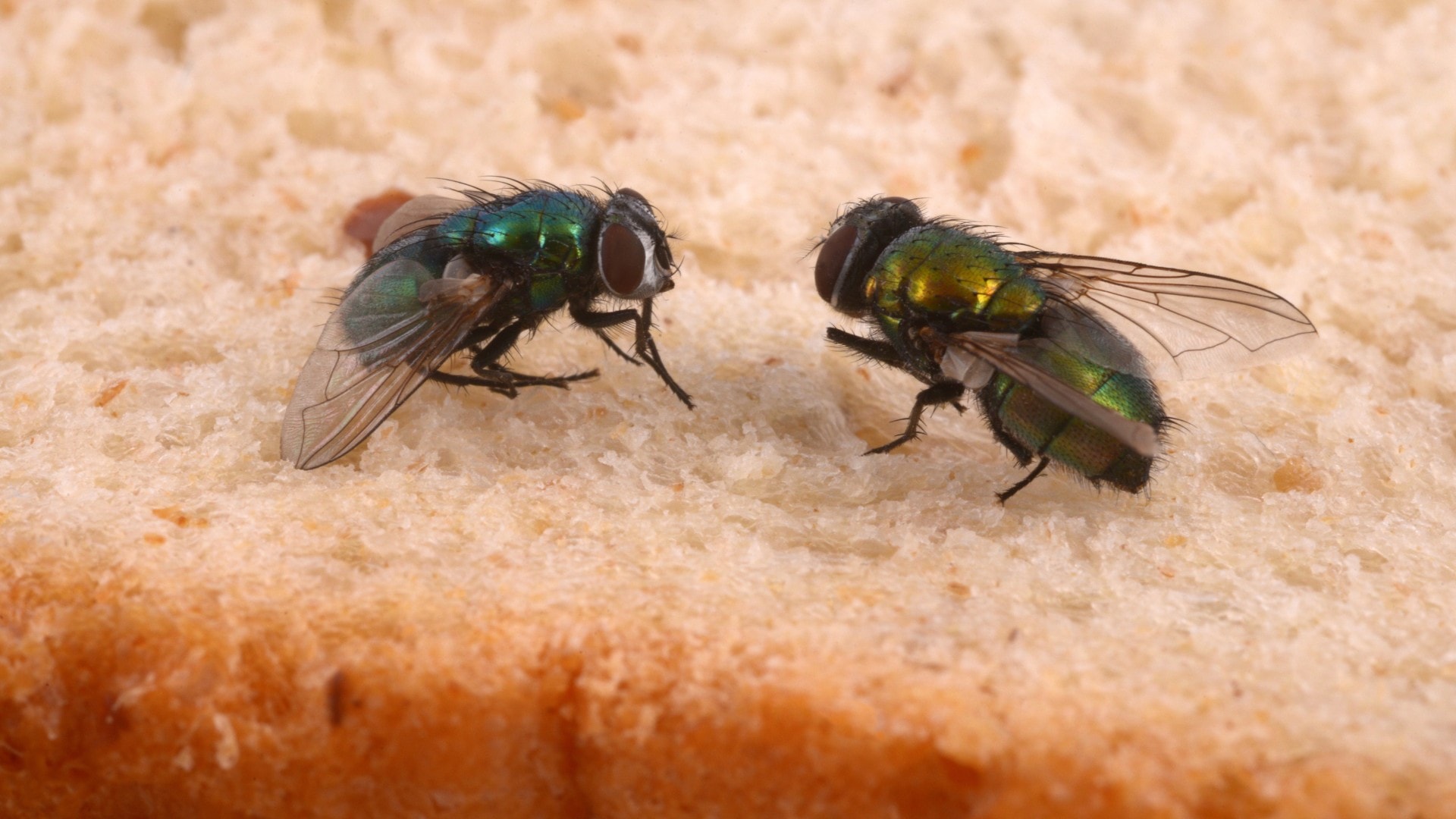
Fly Killer FAQ
What is the best Fly killer?
The best fly killer often depends on the specific circumstances and the type of flies you are trying to eliminate. For general household use, products containing active ingredients like Pyrethrin, permethrin, or imiprothrin can be highly effective. Fly traps and baits are also an excellent choice for targeting adult flies, with pheromone traps being particularly useful for luring them in.
How do I prevent flies from entering my home?
Preventing flies from making their way into your home starts with good sanitation practices. Ensure that all food waste is properly disposed of and that trash cans are sealed tightly. Garbage cans should also be occasionally cleaned to remove residue buildup. Regularly clean your kitchen and dining areas to remove food residues that could attract flies. Additionally, screens on windows and doors can be very effective in keeping pesky flies out while allowing fresh air in.
Can natural remedies work for fly control?
Yes, natural remedies can be effective in controlling flies, although they may require more frequent application and maintenance compared to chemical solutions. Essential oils like eucalyptus, lavender, and peppermint have been known to repel flies. Apple cider vinegar traps can also be useful for capturing flies. Making homemade fruit fly traps can be easy and cost-effective. These methods can be particularly attractive if you prefer to avoid chemical exposure.
What do fly exterminators use to kill flies?
Fly exterminators use a variety of treatments to eradicate flies depending on the type and severity of the infestation. Common methods include the application of residual insecticides, which can provide long-lasting control by killing flies that come into contact with treated surfaces.









